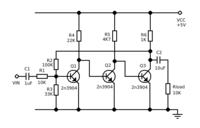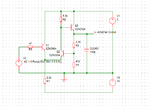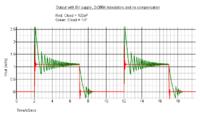godfreyl
Advanced Member level 5

Just had another look at the graphs you showed in post 13. There is really something wrong with that circuit. I already mentioned the gain is too low and the low frequency rolloff is out by three orders of magnitude.
Now I looked at the high frequency response and noticed the gain reduces to 0dB at a frequency of about 4MHz, which is at least 10 times too low.
Can you show a screenshot from your simulator so we can see the circuit you were using?
- - - Updated - - -
Is 2n3904 really the only transistor in your simulator library?
If you don't have any luck with this, I'll give you another circuit that's much less stable. You should have no problem getting that to oscillate.
Now I looked at the high frequency response and noticed the gain reduces to 0dB at a frequency of about 4MHz, which is at least 10 times too low.
Can you show a screenshot from your simulator so we can see the circuit you were using?
- - - Updated - - -
You didn't answer any of the questions I asked.as i told i'm having only 2n3904 ..tried with that but output was not found ringing.
Is 2n3904 really the only transistor in your simulator library?
Thanks. Sorry to waste your valuable time. It sounds like you've already spent almost 1/10 as much time on this as I have.i'll try one more time using simulator
If you don't have any luck with this, I'll give you another circuit that's much less stable. You should have no problem getting that to oscillate.






